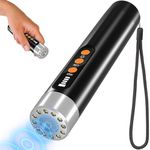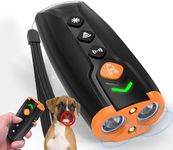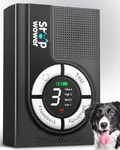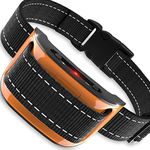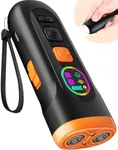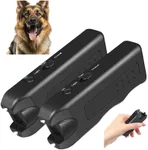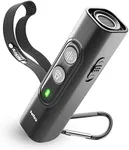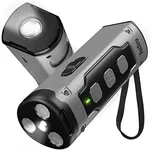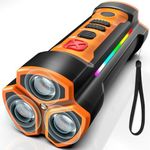Buying Guide for the Best Dog No Bark Devices
Choosing the right dog no-bark device can be a game-changer for managing your dog's barking behavior. It's important to select a device that is safe, effective, and suitable for your dog's size, temperament, and specific needs. Understanding the key specifications of these devices will help you make an informed decision and ensure the well-being of your furry friend.Type of DeviceDog no-bark devices come in various types, including ultrasonic, vibration, spray, and static shock collars. The type of device is crucial because it determines how the device will deter barking. Ultrasonic devices emit a high-pitched sound that only dogs can hear, which can be effective for sensitive dogs. Vibration collars use gentle vibrations to interrupt barking, suitable for dogs that respond well to tactile stimuli. Spray collars release a burst of citronella or air, which can be a good option for dogs that dislike strong scents. Static shock collars deliver a mild electric shock and should be used with caution, typically for more stubborn dogs. Choose a type based on your dog's sensitivity and behavior.
Adjustable Sensitivity LevelsAdjustable sensitivity levels allow you to customize the device's response to your dog's barking. This feature is important because it ensures the device can be tailored to your dog's specific barking habits. Devices with multiple sensitivity levels can be adjusted to respond to different volumes and frequencies of barking. For instance, a highly sensitive setting may be needed for a dog that barks softly, while a lower sensitivity may be suitable for a louder barker. Selecting a device with adjustable sensitivity levels helps you find the right balance to effectively manage your dog's barking without causing unnecessary stress.
Size and FitThe size and fit of the no-bark device are critical for your dog's comfort and safety. Devices come in various sizes to accommodate different breeds and weights. A properly fitting collar should be snug but not too tight, allowing you to fit two fingers between the collar and your dog's neck. It's important to choose a device that is appropriate for your dog's size to ensure it works effectively and does not cause discomfort. Measure your dog's neck and refer to the manufacturer's sizing guide to select the right size. A well-fitted device will be more effective and comfortable for your dog.
Battery LifeBattery life is an important consideration for the convenience and reliability of the no-bark device. Devices with longer battery life require less frequent charging or battery replacement, making them more convenient for regular use. Some devices come with rechargeable batteries, while others use replaceable ones. Consider how often you will need to use the device and choose one with a battery life that suits your needs. For instance, if you plan to use the device daily, a longer battery life or a rechargeable option may be more practical. Ensuring the device has a reliable power source will help maintain consistent training.
Safety FeaturesSafety features are essential to ensure the well-being of your dog while using a no-bark device. Look for devices with automatic shut-off mechanisms that prevent continuous activation, which can cause stress or harm to your dog. Some devices also have warning signals before activation, giving your dog a chance to stop barking before the correction is applied. Additionally, water-resistant or waterproof devices are beneficial for outdoor use and in various weather conditions. Prioritizing safety features will help you use the device responsibly and protect your dog from potential harm.
Range and CoverageThe range and coverage of the no-bark device determine how effectively it can detect and respond to your dog's barking. This is particularly important for ultrasonic and remote-controlled devices. A device with a wider range can detect barking from a greater distance, which is useful if your dog barks when you are not in the same room. Consider the typical environment where your dog barks and choose a device with a range that covers that area. For instance, if your dog barks in the backyard, a device with a longer range will be more effective. Ensuring adequate coverage will help manage barking more efficiently.

